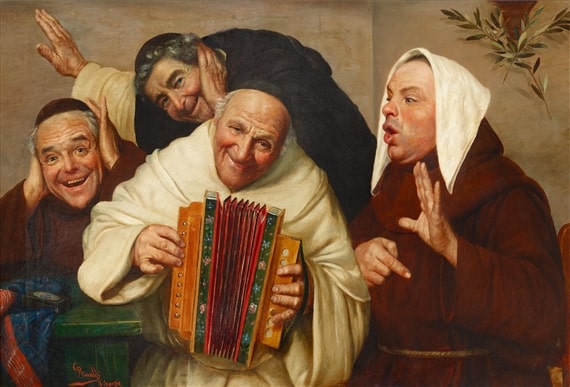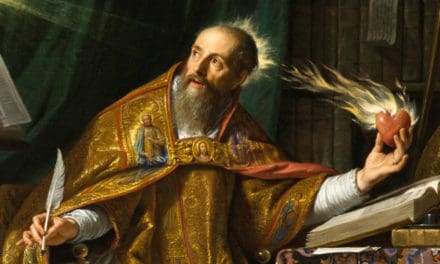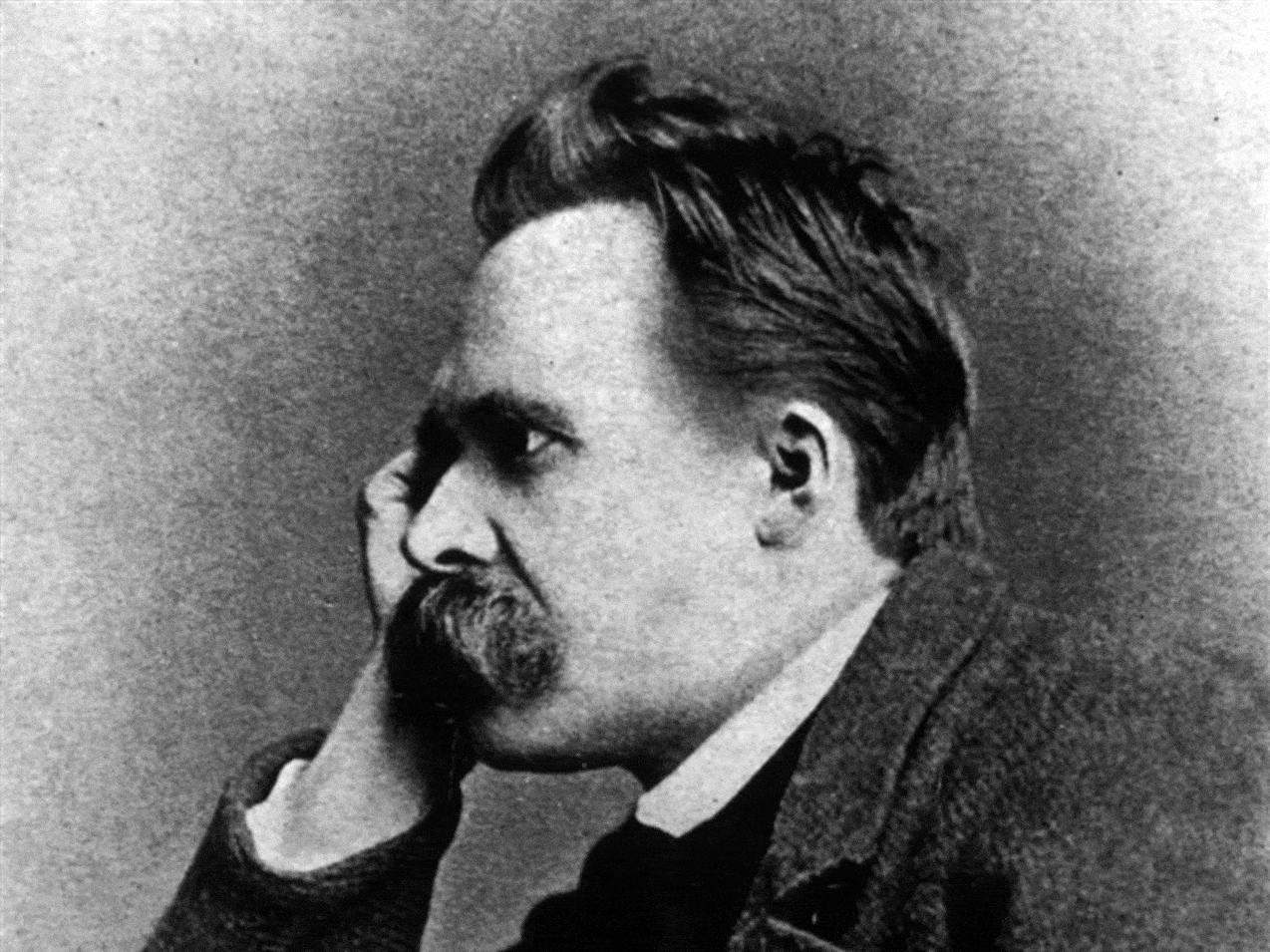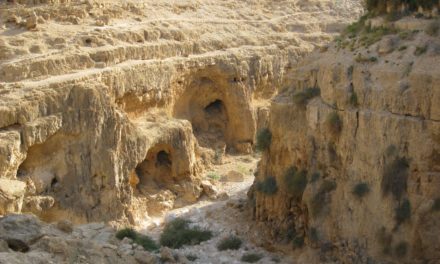This episode is titled – Monk Business Part 2
In the early 13th C a couple new monastic orders of preaching monks sprang up known as the Mendicants. They were the Franciscans and Dominicans.
The Franciscans were founded by Francis of Assisi. They concentrated on preaching to ordinary Christians, seeking to renew basic, Spirit-led discipleship. The mission of the Dominicans aimed at confronting heretics and aberrant ideas.
The Dominicans were approved by the Pope as an official, church sponsored movement in 1216, the Franciscans received Papal endorsement 7 years later.
They quickly gained the respect of scholars, princes, and popes, along with high regard by the masses. Their fine early reputation is counterbalanced by the idleness, ignorance, and in some cases, infamy, of their later history.
To be a Mendicant meant to rely on charity for support. A salary or wage isn’t paid by the church to support mendicant monks.
The appearance of these two mendicant orders was one of the most significant events of the Middle Ages, and marks one of the notable revivals in the history of the Christian Church. They were the Salvation Army of the 13th C. At a time when the spirit of the Crusades was waning and heresies threatened authority, Francis d’Assisi and Dominic de Guzman, an Italian and a Spaniard, united in reviving the spirit of the Western Church. They started monasticism on a new path. They embodied Christian philanthropy; the sociological reformers of their age. The orders they birthed supplied the new universities and study of theology with some of their most brilliant lights.
Two temperaments could scarcely have differed more widely than the temperaments of Francis and Dominic. The poet Dante described Francis as a Flame, igniting the world with love; Dominic he said, was a Light, illuminating the world.
Francis is the most unpretentious, gentle, and lovable of all greats of monastic life.
Dominic was, to put it bluntly à cold, systematic, and austere.
Francis was greater than the order that sought to embody his ways.
The Dominicans became greater than their master by taking his rules and building on them.
Francis was like one of the apostles; Dominic a later and lesser leader.
When you think of Francis, see him mingling with people or walking through a field, barefoot so his toes can feel the soil and grass. Dominic belongs in a study, surrounded by books, or in court pleading a case.
Francis’ lifework was to save souls. Dominic’s was to defend the Church. Francis has been celebrated for his humility and gentleness; Dominic was called the “Hammer of heretics.”
The two leaders probable met at least thre times. In 1217, they were both at Rome, and the Vatican proposed the union of the two orders into one organization. Dominic asked Francis for his cord, and bound himself with it, saying he desired the two to be one. A year later they again met at Francis’ church in Assisi, and on the basis of what he saw, Dominic decided to embrace mendicancy, which the Dominicans adopted in 1220. In 1221, Dominic and Francis again met at Rome, when a powerful Cardinal tried to wrest control of the orders.
Neither Francis nor Dominic wanted to reform existing monastic orders. At first, Francis had no intention of founding an order. He simply wanted to start a more organic movement of Christians to transform the world. Both Dominic and Francis sought to return the church to the simplicity and dynamic of Apostolic times.
Their orders differed from the older monastic orders in several ways.
First was their commitment to poverty. Dependence on charity was a primary commitment. Both forbade the possession of property. Not only did the individual monk pledge poverty, the entire order did as well. You may remember from our last episode this was a major turn-around from nearly all the previous monastic orders, who while the individual monks were pledged to poverty, their houses could become quite wealthy and plush.
The second feature was their devotion to practical activities in society. Previous monks had fled for solitude to the monastery. The Black and Gray Friars, as the Dominicans and Franciscans were called from the colors of their habits, gave themselves to the service of a needy world. To solitary contemplation they added immersion in the marketplace. Unlike some of the previous orders, they weren’t consumed with warring against their own flesh. They turned their attention to battling the effects of evil on the world. They preached to the common people. They relieved poverty. They listened to and sought to redress the complaints of the oppressed.
A third characteristic of the orders was that lay brotherhoods developed à a 3rd order, called the Tertiaries. These were lay men and women who, while pursuing their usual vocations, were bound by oath to practice the virtues of the Christian life.
Some Christians will hear this and say, “Wait – isn’t that what all genuine followers in Christ are supposed to do– follow Jesus obediently while being employed as a mechanic, student, salesman, engineer school-teacher or whatever?”
Indeed! But keep in mind that the doctrine of salvation by grace through faith, and living the Christian life by the power of the Spirit had been submerged under a lot of religion and ritual. It took the Reformation, three centuries later to clear away the ritualistic crust and restore the Gospel of Grace. In the 13th C, most people thought living a life that really pleased God meant being a monk, nun or priest. Lay brotherhood was a way for someone to in effect say – “My station in life doesn’t allow me to live a cloistered life; but if I could, I would.” Many, probably most believed they were hopelessly sinful, but that by giving to their priest or supporting the local monastery, the full-time religious guys could rack up a surplus of godliness they could draw on to cover them. The church facilitated this mindset. The message wasn’t explicit but implied was, “You go on and muddle through your helplessness, but if you support the church and her priests and monks, we’ll be able to pray for your sorry soul and do works of kindness God will bless, then we’ll extend our covering over you.”
On an aside, while that sounds absurd to many today, don’t in fact many repeat this? Don’t they fall to the same error when a husband hopes his believing wife is religious enough for the both of them? Or when a teenager assumes his family’s years of going to church will somehow reserve his/her spot in heaven? Salvation on the family-plan.
Lay brotherhood was a way for commoners to say, “Yeah, I don’t really buy that surrogate-holiness thing. I think God wants ME to follow Him and not trust someone else’s faith.”
A fourth feature was monks activity as teachers in the universities. They recognized these new centers of education held a powerful influence, and adapted themselves to the situation.
While the Dominicans were quick to enter the universities, the Franciscans lagged. They did so because Francis had resisted learning. He was a bit of an anti-intellectualist. He was because he’d seen way too much of the scholarship of priests who ignored the poor. So he said things like, “Knowledge puffs up, but charity edifies.”
To a novice he said, “If you have a songbook you’ll want a prayer-book; and if you have a prayer-book, you’ll sit on a high chair like a prelate, and say to your brother, ’Bring me my prayer-book.’ ” To another he said, “The time of tribulation will come when books will be useless and be thrown away.”
While this was Francis’ attitude toward academics, his successors among the Franciscans built schools and became sought after as professors in places like the University of Paris. The Dominicans led the way, and established themselves early at the seats of the two great continental universities, Paris and Bologna.
At Paris, Oxford, and Cologne, as well as a few other universities, they furnished the greatest of the Academics. Thomas Aquinas, Albertus Magnus, and Durandus, were Dominicans; John of St. Giles, Alexander Hales, Adam Marsh, Bonaventura, Duns Scotus, Ockham, and Roger Bacon were all Franciscans.
The fifth notable feature of the Mendicant orders was their quick approval by the Pope. The Franciscans and Dominicans were the first monastic bodies to vow allegiance directly to him. No bishop, abbot, or general chapter intervened between order and Pope. The two orders became his bodyguard and proved themselves to be a bulwark of the papacy. The Pope had never had such organized support before. They helped him establish his authority over bishops. Wherever they went, which was everywhere in Europe, they made it their business to establish the principle of the Vatican’s supremacy over princes and realms.
The Franciscans and Dominicans became the enforcement arm for doctrinal orthodoxy. They excelled all others in hunting down and rooting out heretics. In Southern France, they wiped out heresy with a river of blood. They were the leading instruments of the Inquisition. Torquemada was a Dominican. As early as 1232, Gregory IX officially authorized the Dominicans to carry out the Inquisition. And in a move that had to send Francis spinning at top speed in his burial plot, the Franciscans demanded the Pope grant them a share in the gruesome work. Under the lead of Duns Scotus they became champions of the doctrine of the immaculate conception of Mary.
The rapid growth of the orders in number and influence was accompanied by bitter rivalry. The disputes between them were so violent that in 1255 their generals had to call on their monks to stop fighting. Each order was constantly jealous that the other enjoyed more favor with the pope than itself.
It’s sad to see how quickly the humility of Francis and the desire for truth in Dominic was set aside by the orders they gave rise to. Because of the papal favor they enjoyed, monks of both orders began to intrude into every parish and church, incurring the hostility of the clergy whose rights they usurped. They began doing specifically priestly services, things monks were not authorized to do, like hearing confession, granting absolution, and serving Communion.
Though they’d begun as reform movements, they soon delayed reformation. They degenerated into obstinate obstructers of progress in theology and civilization. From being the advocates of learning, they became props to ignorance. The virtue of poverty was naught but a veneer for a vulgar and indolent insolence.
These changes set in long before the end of the 13th C, the same century the Franciscans and Dominicans had their birth. Bishops opposed them. The secular clergy complained of them. Universities ridiculed and denounced them for their mock piety and abundant vices. They were compared to the Pharisees and Scribes. They were declaimed as hypocrites that bishops were urged to purge from their dioceses. Cardinals and princes repeatedly appealed to popes to end their intrusions into church affairs, but usually the popes were on the Mendicant’s side.
In the 15th C, one well-known teacher listed the four great persecutors of the Church; tyrants, heretics, antichrist, and the Mendicants.
All of this is a sorry come-down from the lofty beginnings of their founders.
We’ll take the next couple episodes to go into a bit more depth on these two leaders and the orders they founded.
As we end this episode, I want to again say thanks to all those listeners and subscribers who’ve “liked” and left comments on the CS FB page.
I’d also like to say how appreciative I am to those who’ve gone to the iTunes subscription page for CS and left a positive review. Any donation to CS is appreciated.





